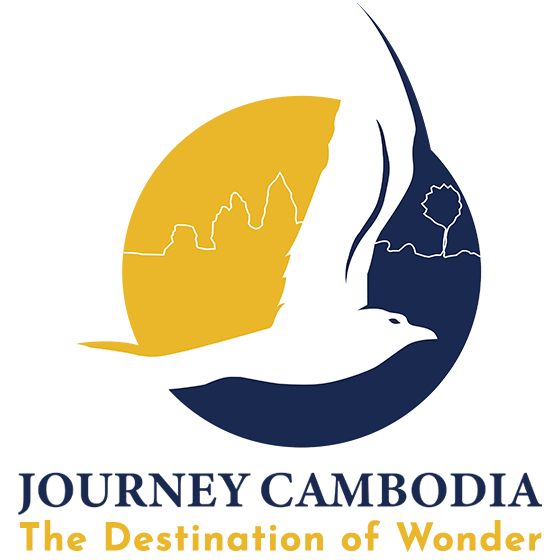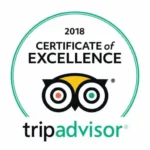Angkor Wat Pass – Skip the Confusion, See More Temples, and Save Big—Fast!
Did you know Angkor Wat, Cambodia’s ancient gem, gets over 2 million visitors every year? I was planning my trip to see this UNESCO World Heritage Site. I found out the Angkor Wat Pass is key to seeing its wonders. This ticket lets you into the Angkor Archaeological Park, filled with amazing buildings that have lasted for centuries.
The Angkor Wat ticket system has options for everyone. You can choose from a day pass to a week-long one. Prices start at $37 for a day and go up to $72 for a week. Plus, a part of each ticket helps a local children’s hospital.
When I started planning my trip to Siem Reap, I learned a lot about the temple pass system. Knowing how to buy and use the pass made exploring Angkor easy.
Key Takeaways:
- Angkor Wat Pass is essential for exploring the Angkor Archaeological Park
- Ticket options include 1-day ($37), 3-day ($62), and 7-day ($72) passes
- Passes can be purchased at the official ticket office or online
- Children under 12 and Cambodian nationals enter for free
- Ticket revenue partially supports local healthcare initiatives
Understanding the Angkor Archaeological Park
The Angkor Archaeological Park is a key part of Cambodia’s history. It’s a big draw for Siem Reap’s tourism. This huge area covers over 400 square kilometers, making it the world’s biggest religious site. It has more than a thousand temples, perfect for history lovers and adventure seekers.
The Historical Significance of Angkor Complex
Angkor Wat, the main attraction, took 35 years to complete. It needed 300,000 workers and 6,000 elephants. This shows the ancient Khmer architecture’s grandeur. It was first a Hindu temple for Vishnu, then became a Buddhist site, showing the area’s spiritual changes.
Temple Highlights and Must-See Attractions
Angkor Wat is famous, but there’s more to see. Places like Angkor Thom, Ta Prohm, and Bayon are must-visits. Each temple has its own story, inviting visitors to explore different levels that symbolize ancient Khmer worlds.
UNESCO World Heritage Site Status
The Angkor Archaeological Park is a UNESCO World Heritage Site. This status highlights its global importance. Walking through these ancient places, I felt a deep connection to history. I also appreciated the efforts to keep this heritage safe for the future.
| Temple | Opening Hours | Notable Features |
|---|---|---|
| Angkor Wat | 5:00 AM – 5:30 PM | Largest religious monument |
| Phnom Bakheng | 5:00 AM – 7:00 PM | Sunset viewing spot |
| Ta Prohm | 7:30 AM – 5:30 PM | Tree-engulfed ruins |
Angkor Wat Pass Types and Pricing
When I planned my trip to Angkor Archaeological Park, I learned about the pass prices. The park has tickets for different lengths of stay and budgets.
One-Day Pass Features
I picked the one-day pass for $37. It’s great for a short visit, open from sunrise to sunset. It’s good for five days after you buy it, so you can adjust your plans.
Three-Day Pass Flexibility
The three-day pass costs $62. It’s good for ten days, so you can visit at your own pace. It’s perfect for seeing the temples without rushing.
Seven-Day Pass Experience
The seven-day pass for $72 is the best for exploring deeply. It’s valid for a month, giving you lots of time to see everything.
Special Categories and Exemptions
Children under 12 with ID get in free. Each pass also helps the Kantha Bopha Children’s Hospital with a $2 donation.
| Pass Type | Price (USD) | Validity | Best For |
|---|---|---|---|
| One-Day | $37 | 5 days | Quick visits |
| Three-Day | $62 | 10 days | Flexible exploration |
| Seven-Day | $72 | 30 days | In-depth discovery |
These fees cover most temples. But places like Phnom Kulen National Park need extra money. You can pay with major credit cards, making it easy to buy your pass.
How to Purchase Your Temple Pass
Getting an Angkor Wat pass is easy. The ticket office is 4 kilometers from the temple. It’s open from 5am to 5:30pm every day.
During peak season, lines can be long. So, plan your visit ahead of time.
Official Ticket Counter Location
At the ticket office, you can pay in US dollars, Cambodian riels, or with Visa/Master Cards. A $2 fee from each ticket goes to Kantha Bopha Children’s Hospital. It’s a nice gesture!
Online Booking Process
Online booking is easy and convenient. It costs the same as buying in person. You can book up to a year in advance. It’s a great way to plan your trip.
You can get an Angkor Wat Pass online. To make trip planning easier, purchase e-tickets in advance on the Angkor Enterprise website. This computerized solution eliminates ticket counter lineups and speeds admission to the Angkor Archaeological Park.
For online transactions, you’ll need to create an account and upload a photo, a valid ID or passport is required for registration.
Payment method for transaction completion.
Buyers get a digital pass to scan at entry points. Tickets are not transferable and must be used during their validity period.
Required Documentation
When you buy your pass, they’ll take your photo. Keep your pass handy for all checkpoints. If you have kids under 12, bring their passports for free entry.
| Pass Type | Price (USD) | Validity |
|---|---|---|
| 1-Day Pass | 37 | 5 days |
| 3-Day Pass | 62 | 10 non-consecutive days |
| 7-Day Pass | 72 | 30 non-consecutive days |
The 3-Day Pass is the best value. It lets you explore without rushing. It’s perfect for seeing all the wonders.
Best Times to Visit and Planning Tips
Timing is key when visiting Angkor Wat. The sunrise is a must-see. Get there by 5 AM to get a good spot. The temples open at 5 AM, so you have time to explore before it gets busy.
The sunset at Phnom Bakheng is also amazing. It offers a view of Angkor Wat in golden light. It’s open until 5:30 PM, a great way to end your day.
Peak tourist seasons are from November to May, especially January to March. To avoid crowds, visit during the shoulder seasons. Here’s a breakdown of visitor numbers throughout the year:
| Season | Months | Visitor Numbers | Weather |
|---|---|---|---|
| Peak | Jan – Mar | High | Dry, cool |
| Shoulder | Nov – Dec, Apr – May | Moderate | Dry, warm |
| Low | Jun – Oct | Low | Wet, hot |
Angkor Wat is a religious site. Dress modestly, covering your shoulders and knees. This shows respect and lets you see everything.
Temple Access and Regulations
Exploring Angkor Wat’s ancient wonders means respecting local customs. The temple complex has rules to keep it sacred and historical.
Dress Code Requirements
I always follow the dress code when visiting temples. I wear clothes that cover my shoulders and knees. Loose, breathable fabrics are best in the hot weather and meet the temple’s standards.
Photography Guidelines
I enjoy taking pictures, but I follow the photography rules. Most places allow photos, but some sacred areas don’t. I look for signs and ask guides if I’m unsure. It’s about getting great photos while respecting the site’s spirit.
Temple Etiquette
Following temple etiquette makes my visit better and shows respect for local culture. I speak softly, avoid touching religious items, and remove my shoes in temple buildings. Always carry your Angkor Pass for checks in the park.
- Speak softly and be mindful of other visitors
- Don’t climb on structures or touch carvings
- Follow designated paths to protect the site
- Keep your pass handy for frequent checks
By following these rules, I have a respectful and enriching visit to Angkor. It’s not just seeing sights, but also preserving them for others to enjoy.
Making the Most of Your Pass
Planning ahead is key to enjoying your Angkor Wat Pass. With over 400 km2 of ruins, it’s easy to feel lost. Here are some tips to help you enjoy your visit to these amazing Siem Reap attractions.
Suggested Itineraries
For a one-day pass, focus on Angkor Wat, Bayon, and Ta Prohm. With a three-day pass, explore Banteay Srei or the Roluos Group. A seven-day pass lets you visit Phnom Kulen and more.
Tour Options
Angkor Enterprise Official Site
When planning a visit to Angkor Wat, it is essential to begin with reliable resources. The official Angkor Enterprise website serves as the primary hub for ticketing and visitor information, ensuring travelers access accurate details about passes, pricing, and park guidelines. This platform is particularly valuable for those seeking updates on conservation efforts and entry regulations.
Angkor Wat Sunrise and Highlights Tour
Those who cherish the serenity of early mornings will find the Angkor Wat Sunrise and Highlights Guided Tour an unforgettable option. By combining an awe-inspiring sunrise view with guided exploration of iconic temples, this package balances expert commentary with opportunities for personal reflection at the world’s largest religious monument.
Banteay Srei and Grand Circuit Heritage Tour
For travelers drawn to intricate artistry and quieter temples, the Banteay Srei and Grand Circuit Heritage Tour provides a deeper look into Cambodia’s architectural wonders. With its delicate pink sandstone carvings and visits to notable Grand Circuit temples, this tour celebrates the lesser-seen, yet profoundly significant, corners of the Angkor Archaeological Park.
An Angkor Wat experience is a must for anyone interested in Cambodian tourism. The adventure starts with choosing the right pass. You can pick from a $37 one-day pass to a $72 seven-day pass.
I chose the three-day pass for $62. It let me see Angkor Thom and other wonders. Hiring a driver for $15 per half-day was a smart move. The Angkor Pass system helps keep these amazing structures safe.
My trip wasn’t just about temples. I also visited the Landmine Museum and Siem Reap’s killing fields. These places gave me a deeper understanding of Cambodia’s history. Looking back, I’m thankful for the friends I made and the memories we shared in Angkor Wat.









